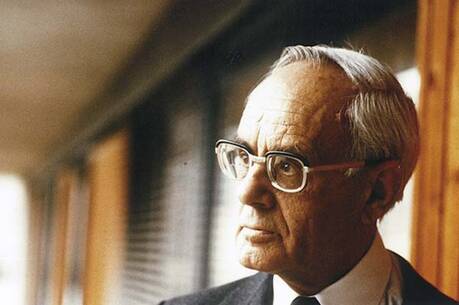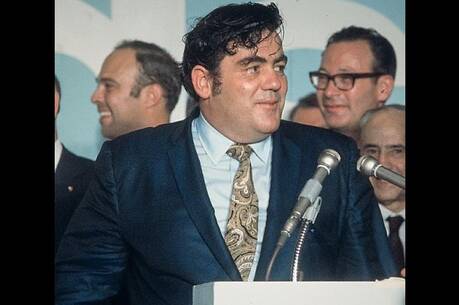Tangled Troubles
This book is a not a history of Catholicism in Ulster as a religion, but rather considers the Catholics of Ulster as a political and cultural identity. Anyone who has spent any time in Northern Ireland knows that the confessional designation of Catholic and Protestant is shorthand for a specific and divergent set of group experiences and historical memories. As an old joke has it, the question posed to the nonbeliever in Northern Ireland would be are you a Protestant atheist or a Catholic atheist? These political and cultural identities are both internally and externally constructed by history. Marianne Elliott, one of the most eminent and accomplished historians of modern Ireland, an Ulster Catholic and participant in the experience she traces, explores the origins and development of this identity. She is ideally situated to engage in a dialogue between Ulster Catholic collective memory and the actual historical record. In so doing, she exposes many beliefs as myths or exaggerations, and persuasively confirms the truth of others.
Catholic and Protestant identities, of course, emerged only with the 16th-century Reformation, but Elliott begins her story with the Gaelic past, which has bequeathed to the present, among many other things, a link between landscape and identity, some of the peculiarities and injustices of a landowning system that plagued 18th- and 19th-century Ireland, and a religion owing much of its tenacity and strength to its merging with a popular pre-Christian tradition.
Catholic collective memory idealizes a golden Gaelic past, terminated in the brutality and trauma of English conquest. But Elliott sees Gaelic society already in decline on the eve of Tudor conquest, which was determined less by state policy than the work of enterprising freebooters. Gaelic lords were harsh masters, mostly concerned with dynastic aggrandizement rather than national consciousness or responsible stewardship over their dependents. Loss of status rather than loss of land constituted the real fact of the Ulster Plantation of the early 17th century, infamous in Catholic memory as the moment of the destruction and dispossession of Gaelic Ulster. The elite were worse off as a result, but the poor may have done better under English landholding conventions.
The Ulster Plantation literally “planted” English and Scottish Protestants in the most Gaelic province of Ireland, transforming it into the most Protestant of the four provinces. This process also involved a century-long informal migration of Scots into the region. But Catholics were not displaced in the underpopulated province; rather the two confessional communities emerged in tandem, defining each other, drawing strength and unity from opposition to each other. But where popular tradition on both sides sees this as the beginning of endemic mutual hostility that found its most recent expression in the Troubles, Elliott sees the Plantation as actually beginning to work out in a climate of tolerance and neighborliness. What derailed that development was the Ulster Rising of 1641, with its spontaneous, brutal but still much exaggerated massacres of recent settlers. The rebellion of 1641 “destroyed the Ulster Plantation as a mixed settlement and made religion for the first time the main justification for dispossession.”
Elliott argues that awareness of religious difference was slow to come, and then most marked among the literate elite—poets and clerics. Sharing the decline in status of their dispossessed lords and employers, these were the true authors of a national consciousness that emerged by the end of the 17th century, when the traditions they celebrated had long been defeated. But it is with the bards and clerics and the partisan history they told that the link between Irishness and Catholicism was forged.
But if persecution of Catholics in the 17th century, even under Cromwell, has been wildly exaggerated, Elliott acknowledges that political and material discrimination against Catholics had become "part of the fabric of society.” The social consequence of the 17th-century land settlements was to deprive Ulster of a Catholic gentry and place Catholics at a lower social level than elsewhere in the country.
Elliott may soften history’s verdict on many of the sectarian myths of early modern Ireland, but she is equally quick to acknowledge genuine abuse. The penal laws that codified discrimination against Catholics (all of whom were presumed to be latent traitors) in the early 18th century, though not enforced, were nonetheless corrosive. They “were products of and enshrined a frame of mind about Catholics which continued long after their effectiveness had passed,” pervading all classes of civil society, creating “an undercurrent of sullen Catholic resentment and swaggering, if insecure, Protestant imperiousness which would surface at times of crisis.”
The breakdown of demographic, cultural and especially political demarcations between Catholic and Protestant led to the conflict of the 1780’s and 1790’s and the alienation of Catholics from the state. What middle ground existed was steadily eroded in the 19th century. Daniel O’Connell’s triumphant Catholic Emancipation movement and Protestant Ireland’s Second Reformation provoked sectarian identities and animosities. The Land War was relatively benign in Ulster because of already good landlord-tenant relations (and that due in part to a strong Presbyterian farmer interest). The major social fact for Catholics after the famine in Ulster was a flight to the towns, especially to Belfast, where they faced persistent discrimination, intimidation and riots. Urban Ulster witnessed the entrenchment of two sharply separate and segregated cultures. Interconfessional class solidarity was equally discouraged by the Catholic Church and Protestant elites and Orangeism. Such ghettoization benefited the church, and enjoyed compliance from a laity that was less anticlerical there than anywhere else in Ireland. Ulster Catholics were not highly politicized, and when nationalism came to Ulster in the late 19th century, it was solidly of the constitutionalist variety. This was greatly due to the ascendant position of the priests, who operated as a force for political moderation, with the interests of the church coming before all else.
Partition provoked intense sectarian conflict between 1920 and 1922. Catholics in general stood in as vicarious targets in lieu of the I.R.A. After the death of Michael Collins, the Free State turned inward and with the debacle of the Boundary Commission of 1925 and the tacit recognition of the Northern Ireland state, the Catholic minority felt justly abandoned. The bulk of northern Catholics “remained, as they had always been, conservative, clerically-dominated, but utterly constitutional nationalists.” Their ambivalence toward the Orange state played right into the hands of ultra-loyalists, who could paint the Catholics as the enemy within the gates, justifying systematic discrimination in housing and employment, gerrymandering and abuses of the security forces. Not until the 1960’s were Catholics prepared to accept the legitimacy of the partitioned state, but their campaign for civil rights was interpreted by Protestant ultra-loyalists as a stalking horse of the I.R.A. The resulting backlash produced the Troubles of the last 33 years.
The Troubles undermined the secure Catholic identity of the civil rights years. Catholics could not be victims at the same time that they were rebels. The I.R.A. articulated the same history of oppression on which all Catholics had been fed in home and school for decades, even centuries—a romantic nationalism appropriated by a violent republican tradition toward which Ulster Catholics were highly ambivalent. It was difficult to critique the Orange state without appearing pro-I.R.A. and equally hard to critique the I.R.A. without betraying a now fragile Catholic identity. In Elliott’s view the I.R.A. features little as part of Catholic Ulster—it appears mostly as an external provocation rather than a force within the Catholic community like the S.D.L.P.
Elliott is nothing less than masterful when dealing with the history of Ulster Catholics until she reaches the Troubles; then her touch is less confident and her coverage rather unfocussed and uncertain. She tends to depict Ulster Catholics as an undifferentiated political and cultural identity. In drawing heavily on novels and memoirs to give a human face to that identity, she ignores much recent ethnographic work on the north. She acknowledges class differences but doesn’t really take us to the Falls Road or the Bogside, except for riots. There is not even an acknowledgement that the Catholic experience might be differentiated by gender, though gendered notions of home and hearth and supporting a family are crucial attributes of identity. What does come through in these last sections of the book is the sense of pain at the sheer waste of the last three decades, and it is here perhaps that Elliott, the professional scholar, is understandably overwhelmed by the tragedy of her homeland.
This article also appeared in print, under the headline “Tangled Troubles,” in the September 10, 2001, issue.








